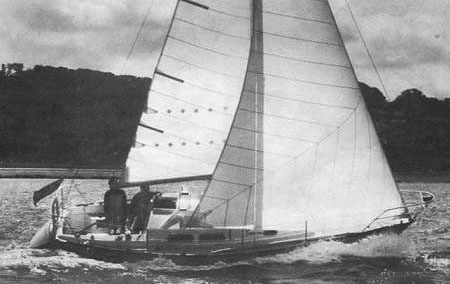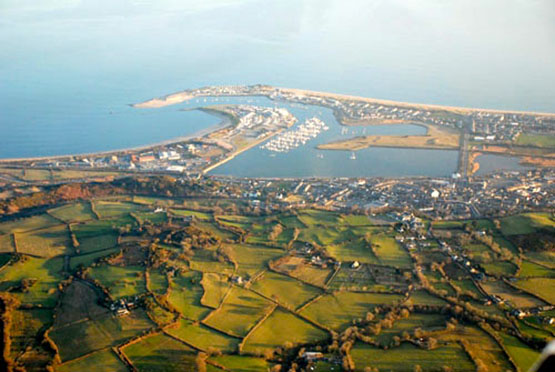Displaying items by tag: Gerry Haggas
Gerry Haggas 1919-2016
For Irish sailors who put in the great times with ISORA from the 1970s onwards for three and more decades, it simply didn’t seem like a proper offshore race unless Gerry Haggas from Pwllheli was taking part with his pale blue Elizabethan 30 Sundancer. He and the boat and the ISORA programme became part of each other. Yet Sundancer was by no means the only boat he campaigned in a lifelong contribution to North Wales and Irish Sea competition, though she was the special one.
By the time he was making regular appearances in the frame with the new Sundancer in classic ISORA events, he could look back with satisfaction to a period when he was setting the pace in the development of Pwllheli as a sailing centre, as he served as Commodore of the 1958-founded Pwllheli Sailing Club (Clwb Hwylio) from 1962 to 1964 with the popular and enthusiastic support of his wife Olive, and was a regular contender as well as a developer of sailing against the magnificent backdrop of Snowdonia in Tremadoc Bay.
The late Gerry Haggas chose his boats well - he was most associated with the deservedly successful Elizabethan 30 Sundancer over decades of successful ISORA campaigning.
Yet like many summer sailors in this special area within the sheltering arm of the Lleyn Peninsula, his home was a long way away – it was in Yorkshire, and he was a Yorkshireman through and through in classic style. But he thought nothing of driving many miles over distances which conveniently-placed Irish sailors thought crazy, just to be able to get aboard his beloved boat in those long-gone days when Pwllheli was not yet blessed with a marina, and set out to race into the night.
Gerry’s relationship with Sundancer was rather special, as she was a David Thomas design, but built in Lymington by Peter Webster, a former Yorkshire baker who liked boats so much he upped sticks and moved south to build them beside the Solent. Webster liked this particular design best of all, so although he built many other boat types, he kept the Elizabethan 30 Liz of Lymington to be his pet boat until his death, when it emerged in his will that he’d left the boat to David Thomas, who in turn kept her until a very advanced age as his own boat.
So there’s something about the Elizabethan 30 which is rather special, and there still is though it was 1969 when she first appeared. With a new wave of Half Tonners coming along through the 1970s, Gerry Haggas quietly gave them a hard time. Quite rightly, his older boat rated a little lower, so in your hot new Half Tonner as night came on, you had to be fairly confident that you’d put Sundancer well astern in the myriad of navigation lights. But as sure as God made little apples, as first light came up, there he’d be, right beside you. Only the classic Yorkshire response would do in such circumstances.

Pwllheli as it is today. Gerry Haggas played a key role in its growing popularity as a sailing centre, as he was Commodore of Pwllheli SC in 1962-64 just four years after the club was founded
But while Gerry himself was a quiet man, he had no doubt at all of the proper place of his beloved sailing area in the great scheme of things. I recall one wet evening coming ashore in Abersoch (where of course it rains only once a year) during a well-attended ISORA Week, and there sheltering in the lee of South Caernarvon SC was sailmaker Bruce Banks, a former Olympic sailor and multi-champion.
It turned out he was there because he’d made a new suit of sails for Sundancer, and Gerry (and maybe Peter Webster too) had quietly made it clear that he should travel north from the Solent and spend a day or two at ISORA Week in Tremadoc Bay making sure the guys in Sundancer were doing it right. He enjoyed it so much the “day or two” became the whole week. That was the quiet way with Gerry Haggas. He’d a great 96 years voyage through life. Our thoughts are with his family and especially his son Bill.
WMN





























































